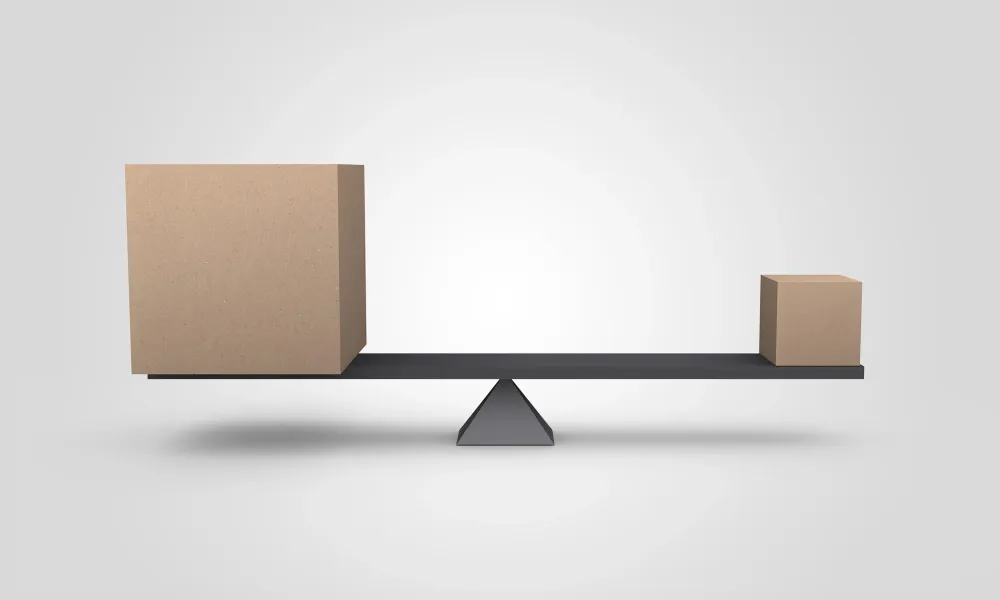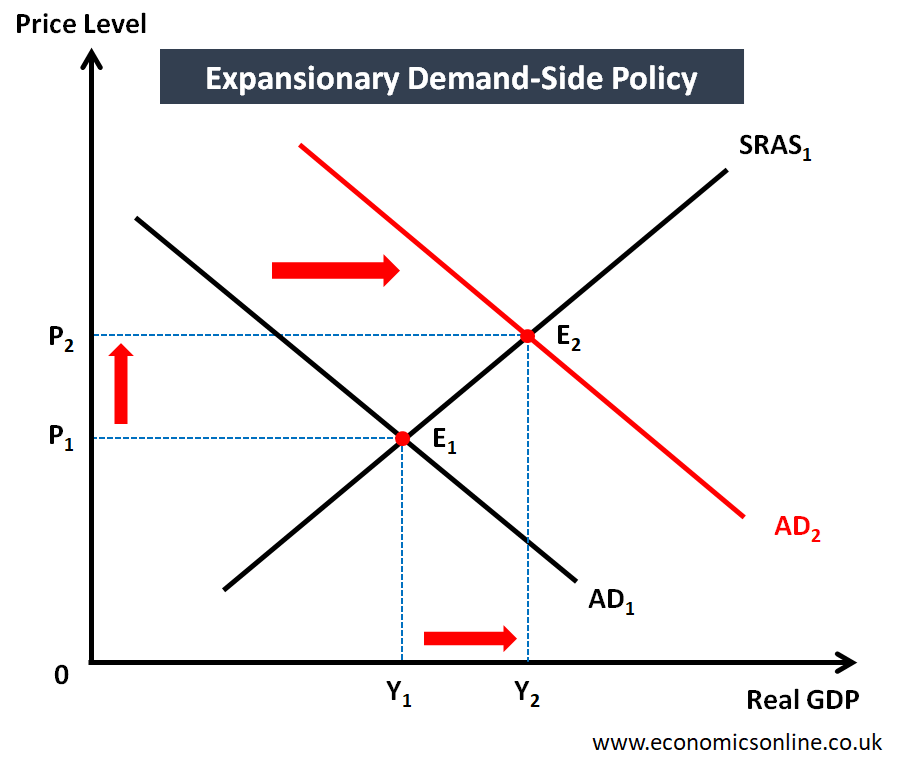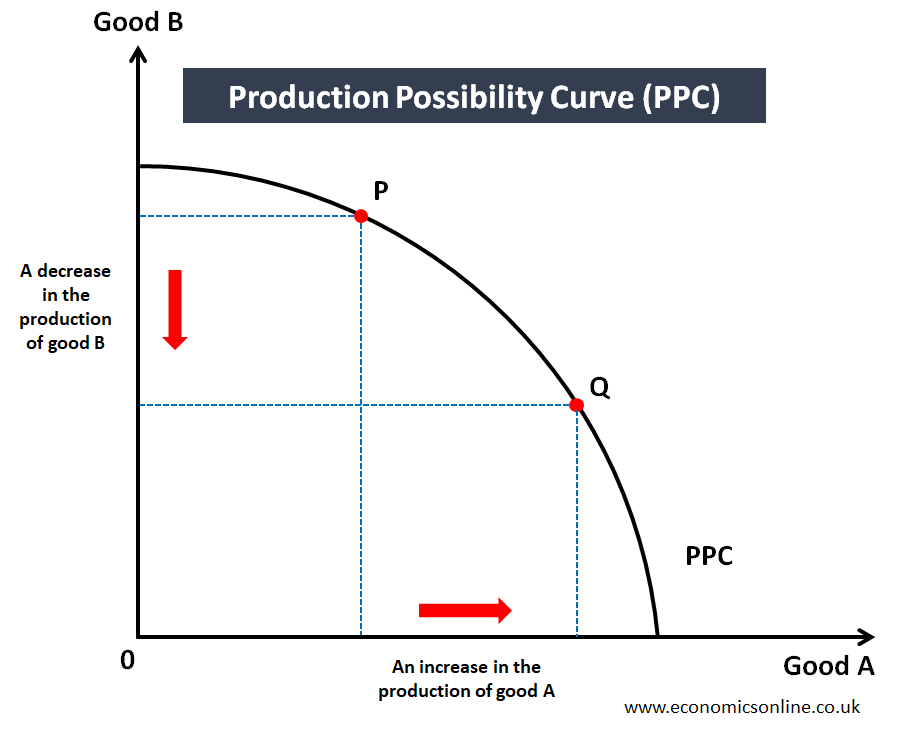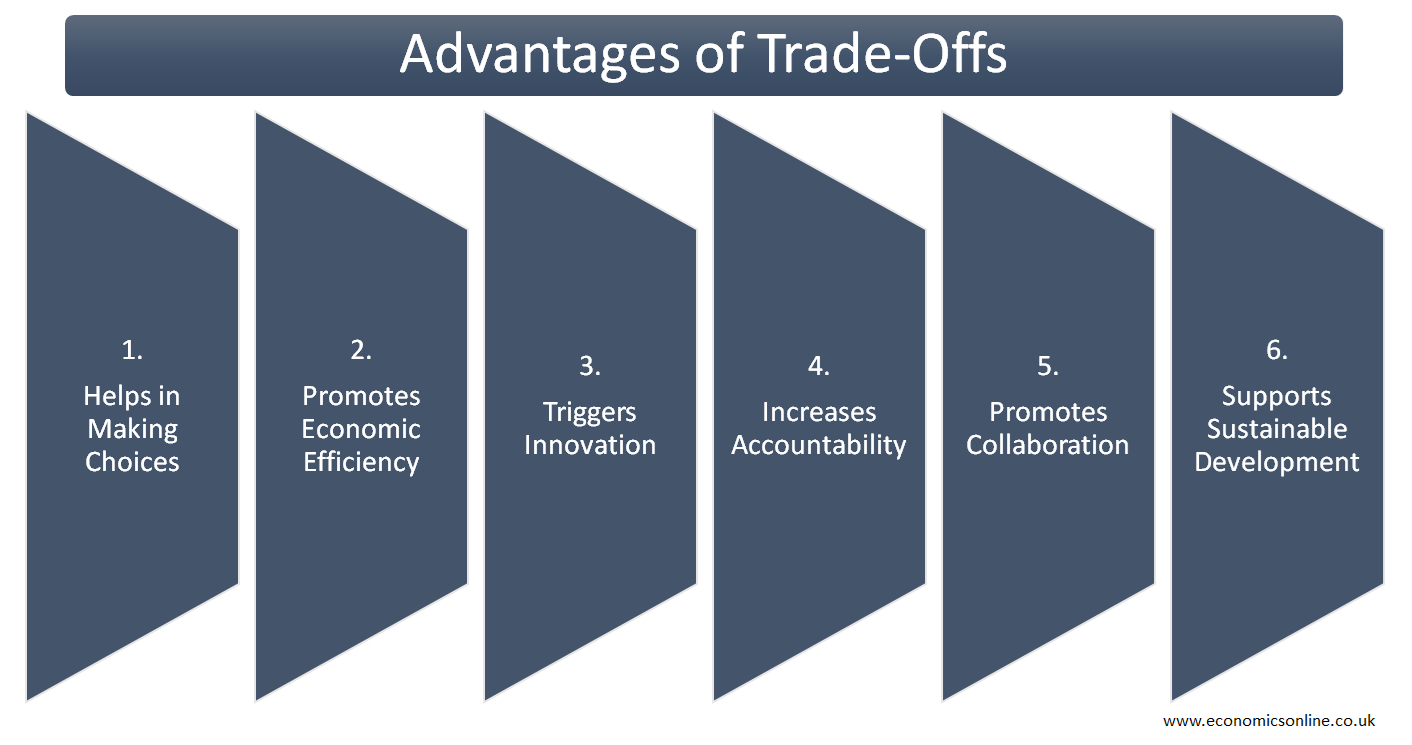
An image of a balanced lever with boxes on both sides.
Trade-Off in Economics
Trade-Off Definition
A situation in economics in which a decision-maker has to choose between two competing alternatives and, as a result, one option is given up in order to pursue the other option is called a trade-off. Trade-offs are decision-making situations in which the selection of one option makes it necessary to give up another option. Trade-offs arise because of the assumptions of scarcity and rationality and result in opportunity costs.
Examples
For example, if a person chooses to go on a foreign vacation, he is sacrificing the opportunity to save for future purchases and investments. Another example of a trade-off is the choice of a government to spend its budget on consumer goods and national defence. As governments spend more resources on military and defence equipment and technology and spend a lesser amount of resources on consumer goods that are important for improving living standards in that specific country.
Types of Trade-Offs
There are many different types of trade-offs, and some of them are explained below:
Equity-Efficiency Trade-Off
A situation in which conflict occurs between maximising economic efficiency and maximising equity in some ways is called the equity-efficiency trade-off. When this type of situation arises, economists and policymakers decide to sacrifice some amount of economic efficiency in order to maintain an equitable society. Both equity and efficiency are equally important, but they can’t be achieved simultaneously. Some economies only prefer to get maximum benefits from the disposal of resources, which seems like a no-brainer. The problem is to make sure that those benefits are equally distributed among all people in society.
Unemployment-Inflation Trade-Off
At a macroeconomic level, there is often a trade-off between unemployment and inflation, at least in the short-term. For example, when government increases aggregate demand by using expansionary demand-side policies, unemployment is reduced, but demand-pull inflation is created.

The above graph illustrates that the rise in aggregate demand from AD1 to AD2 is leading to economic growth as the real GDP is increasing from Y1 to Y2, which means a fall in unemployment. But this fall in unemployment is at the cost of demand-pull inflation, as the general price level is rising from P1 to P2. This trade-off is also explained in the short-run Phillips Curve.
Trade-Off between Economic Growth and Environmental Care
Countries also face a trade-off between economic growth and environmental care. Higher economic growth means higher output being produced by using more resources, and this may involve the creation of pollution, greenhouse gas emissions, and climate change, which have negative effects on the environment to a large extent. This can guide strategic planning and policy-making for sustainability.
Time Trade-Offs
A type of trade-off in which one person chooses to spend more time on one task over another is called a time trade-off. For example, a worker might face a work-leisure trade-off. If he decides to work for more hours, he will be able to take less leisure.
Money Trade-Offs
A type of trade-off in which one person decides to spend money on one good or service over another is called a money trade-off. The rejected option or foregone option shows the loss of opportunity in choosing the selected option. Similarly, a person may face trade-off decisions between consumption and saving. Higher consumption means fewer savings.
Resource Trade-Offs
A type of trade-off in which a person or a country allocates available resources to multiple projects or tasks is called a resource trade-off. In a resource allocation trade-off, resources allocated to one task can’t be used for another task. This concept is also illustrated by the production possibility curve (PPC), where an increase in the production of one good will decrease the quantity of the other good.

In the above graph, while moving from point P to point Q, a country is re-allocating resources to increase the production of good A at the cost of reducing the production of good B.
Advantages of Trade-Offs
The following are some advantages of an economic trade-off:
Helps in Making Choices
A trade-off helps businesses and individuals decide or choose between two options by weighing the benefits and costs of both options. Firms can make suitable business strategies by carefully considering all the options involved. Similarly, entrepreneurs can make informed entrepreneurship decisions in terms of starting a new venture or developing a new product.
Promotes Economic Efficiency
They help individuals and businesses prioritise their resources and allocate them carefully, which promotes economic efficiency in a country.
Triggers Innovation
As organisations and individuals are involved in making sacrifices and choices at the same time, trade-offs trigger innovation and look for new solutions in terms of resource allocation and product development.
Increase Accountability
In trade-offs, individuals and businesses are accountable for the choices they make and take full responsibility for their respective outcomes.
Promote Collaboration
Trade-offs promote collaborations as they encourage individuals and businesses to work together to find solutions that are mutually beneficial for both parties.
Supports Sustainable Development
Trade-off also supports sustainable development by encouraging individuals and businesses to consider the long-term impacts of their choice on society, the environment, and future generations.

Disadvantages of Trade-Offs
The following are some disadvantages of an economic trade-offs:
Limited Options
A trade-off can limit the availability of options and also restrict the ability to consider all possible outcomes.
Leads to Compromise
Another disadvantage of a trade-off is the compromise or sacrifice of beneficial values or goals.
Creates Conflict
Trade-offs also cause conflict between individuals and businesses with multiple priorities and interests.
Reduces Flexibility
Trade-offs also cause a reduction in the flexibility and adaptability of individuals and businesses because they limit the options and promote compromising on beneficial options.
Increases Stress
Trade-offs are more stressful and challenging experiences, especially when individuals and businesses have to choose between limited resources, leading to difficult decisions in a changing business environment.
Results in Dissatisfaction
Trade-offs can also result in dissatisfaction or cause frustration when the chosen alternatives are perceived as unfavourable.
Opportunity Cost
The cost of giving up on the next best alternative is called the opportunity cost. The opportunity cost represents the potential benefits that can be gained from making a different decision.
Examples
The following are some examples of opportunity costs, which have great relevance in the world of business, economics, and social sciences:
Work-Leisure Choices
An example of the opportunity cost is the work-leisure choice, in which a person decides not to work an extra ten hours per week, which involves the cost of the next best alternative in the form of the lost wages he has given up. Employees can make careful decisions about work and leisure by considering the opportunity costs involved.
Government Spending Priorities
Another example is the government spending priorities, in which the government spends $30 billion on the health service sector, which automatically reduces the same amount for spending in the defence and education sectors.
Investing Resources in Capital Goods
Investing resources in capital goods means that the production of consumption goods will be given up today, leading to a sacrifice of current standard of living.
Use of Limited Farming Land
The limited availability of farmland can lead to growing wheat as biofuel, which means that the wheat is less available for the production of food, which leads to an increase in prices.
Similarities between Trade-Off and Opportunity Cost
The following points explain the similarities between the trade-off and the opportunity cost:
- Both are related to making choices and making informed decision between two alternatives.
- In both processes, one option is chosen by giving up the other one.
- Both processes consider the cost of alternatives.
- Both are used in economic decision-making process.
- Both deal with the allocation of limited resources.
- Both are used in the most efficient use of resources.
- In both concepts, a comparison of benefits and costs is involved.
- Both costs, either tangible or intangible, are considered in the concepts of trade-off and opportunity cost.
- Macroeconomic and microeconomic analyses are done for both concepts.
Conclusion
In conclusion, trade-offs refer to a situation in which opting for one option leads to the cost of giving up the other option. As a person benefits from the chosen option, he also pays a cost associated with the rejected option. Trade-offs occur because individuals, firms, and economies have limited resources that have to be allocated in the best possible ways.


